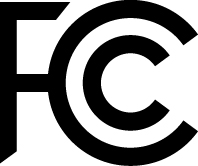Spectrum Auction Hits A Milestone In Reverse
But uncertainty remains until the “forward’ auction is complete
Story Highlights
The Federal Communications Commission’s reverse auction reached a milestone this week with the announcement of bids raised for 126 MHz of television airwaves. After 52 rounds of broadcaster bidding in the reverse auction, the amount bid the multi-part event is $86.4 billion. This aspect of the auction, which will ultimately reallocate most of the 600-MHz portion of the broadcast spectrum, will be followed by a forward auction, scheduled for late July or August, in which wireless carriers and others will bid to take over the spectrum made available during the reverse auction.
 “Today, bidding concluded in the reverse auction, establishing the cost for clearing 126 MHz in the TV band for wireless use,” said Gary Epstein, chair of the FCC’s Incentive Auction Task Force, in a statement. “Strong participation from broadcast stations made this initial clearing target possible. Now the action shifts to the forward auction, which will give wireless bidders the opportunity to compete for this beachfront spectrum to meet America’s growing mobile data needs.”
“Today, bidding concluded in the reverse auction, establishing the cost for clearing 126 MHz in the TV band for wireless use,” said Gary Epstein, chair of the FCC’s Incentive Auction Task Force, in a statement. “Strong participation from broadcast stations made this initial clearing target possible. Now the action shifts to the forward auction, which will give wireless bidders the opportunity to compete for this beachfront spectrum to meet America’s growing mobile data needs.”
It is unclear if 99 declared spectrum buyers like Verizon and AT&T will be willing to collectively spend that much for the RF spectrum to expand their networks, an amount that’s more than twice that of conservative predictions. If not, the FCC could hold another round of the bidding and reduce the available amount of spectrum slightly. Various observers have suggested that current economic conditions, including a soft labor market and the recent “Brexit” event that roiled markets for the last week, could hold down bids for the spectrum.
NAB Executive Vice President of Communications Dennis Wharton issued a statement that read, “Broadcasters have done our part; now it’s up to the wireless industry to demonstrate the demand is there for low-band TV spectrum.”
Wireless microphone manufacturers, the pro audio segment with the greatest stake in the outcome of the auctions, are continuing to watch the auctions’ progress.
“We won’t know the outcome of the incentive auction for a few months. Only an initial clearing target has been announced, the final results could differ substantially,” said Joe Ciaudelli, director, of spectrum affairs for Sennheiser. “We basically know the supply side of the equation at this point: that some broadcasters are willing to relinquish their license[s] if their price is met. The question remains whether the broadband service providers will submit bids that exceed the threshold to pay the broadcasters’ prices plus cover the other costs surrounding the auction. [Estimated at as much as $200 million, plus an additional $1.75 billion to cover the cost of repacking broadcasters in new tighter spectrum after both parts of the auction are completed.] If that does not occur in the first round of bidding, the amount of spectrum to be auction will be reduced and a new round of bidding will occur. This will be repeated until demand matches supply. That is why the initial clearing target represents the maximum amount of spectrum that could be reallocated.”
Mark Brunner, VP, government relations at Shure, amplified that, adding, “If the broadcaster prices are not met, they will start again with a reverse auction, which would impact prices and potentially the amount of spectrum made available. The auction is designed to go back and forth between the buyers and sellers until an equilibrium is met, and it is likely that there will be multiple stages.”
